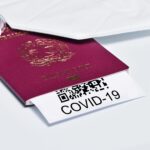In an increasingly competitive global landscape for top-tier talent, Canada is once again positioning itself as a premier destination for skilled professionals. This article delves into the evolving immigration policies specifically designed to attract tech talent, with a keen focus on providing new, streamlined opportunities for H-1B visa holders currently in the United States. As the U.S. immigration system sees potential fee increases and persistent uncertainty, Canada’s proactive measures offer a compelling and stable alternative for career growth and permanent residency.
Table of Contents
- The Shifting Tides: Why Canada Presents a Remarkable Alternative for Tech Professionals Unveiling Canada’s New Tech Talent Strategy for H-1B Visa Holders A Practical Guide: How H-1B Holders Can Seize This Unprecedented Opportunity Beyond the Work Permit: Long-Term Prospects for H-1B Visa Holders in Canada Frequently Asked Questions
The Shifting Tides: Why Canada Presents a Remarkable Alternative for Tech Professionals
The global race for tech talent has intensified, and recent developments in the United States are prompting many skilled workers to explore their options abroad. Proposed hikes in H-1B visa application fees, coupled with the perennial lottery’s unpredictability and lengthy green card backlogs, have created a climate of uncertainty for foreign tech professionals. This environment serves as a significant ‘push’ factor, encouraging individuals and their families to seek more stable and welcoming immigration systems. Canada has astutely identified this trend and is leveraging it by rolling out policies that directly address the pain points experienced by H-1B visa holders. The ‘pull’ factors offered by Canada are substantial and multifaceted. Beyond a more predictable and accessible immigration system, the country boasts a thriving tech sector in hubs like Toronto, Vancouver, and Montreal, a high quality of life, universal healthcare, and a deep commitment to multiculturalism. This combination of professional opportunity and personal well-being makes the prospect of moving from the U.S. to Canada exceptionally appealing for those looking to build a secure future without sacrificing their career ambitions. The Canadian government’s explicit targeting of U.S.-based tech workers underscores a strategic vision to build its innovation economy by attracting the world’s best and brightest.
Unveiling Canada’s New Tech Talent Strategy for H-1B Visa Holders
In a direct and ambitious move, Immigration, Refugees and Citizenship Canada (IRCC) has launched a dedicated stream designed to attract H-1B visa holders. This initiative is a cornerstone of Canada’s broader Tech Talent Strategy, which aims to address labor shortages in the tech sector and cement Canada’s reputation as a global leader in innovation. The centerpiece of this new policy is the availability of an open work permit, a highly coveted document that allows a professional to work for nearly any employer in Canada without being tied to a single company. This offers a level of freedom and career mobility that is often difficult to attain under the H-1B system. The program is reportedly designed to accept a significant number of applicants, with streamlined processing to ensure that qualified individuals can make the move quickly. The eligibility criteria are expected to be straightforward, focusing primarily on holding a valid H-1B visa and having the requisite educational and professional background. This initiative effectively creates an express lane for U.S.-based tech talent, removing many of the bureaucratic hurdles typically associated with international relocation and work authorization. It’s a clear signal that Canada is not just open for business but is actively courting skilled professionals who may feel undervalued or insecure in their current situation.
A Practical Guide: How H-1B Holders Can Seize This Unprecedented Opportunity
For H-1B visa holders considering a move to Canada, understanding the application process is the first critical step. The new program simplifies this journey significantly. The primary requirement is proof of valid H-1B status. Applicants will need to prepare a comprehensive package of documents, including their passport, proof of their U.S. visa status, educational credentials (potentially with an Educational Credential Assessment – ECA), and evidence of work experience. The application will likely be submitted online through the IRCC portal, which is designed for user-friendly navigation. Once the application for the open work permit is approved, applicants receive a letter of introduction, which they present to an officer at a Canadian port of entry to have their official work permit issued. The open work permit is typically valid for up to three years, providing ample time to gain valuable Canadian work experience—a key factor for permanent residency.
Key Takeaways for H-1B Applicants
- Direct Pathway: This new stream is a dedicated, simplified route for H-1B visa holders, eliminating the need for a Canadian job offer or a Labour Market Impact Assessment (LMIA) for the initial work permit. Freedom and Flexibility: The open work permit provides the liberty to change employers, negotiate better terms, or even start a business, offering unparalleled career flexibility. Spousal and Family Benefits: Spouses and common-law partners of the principal applicant are also eligible for an open work permit, and dependent children can study in Canada, making it a family-friendly option. Bridge to Permanence: The work experience gained in Canada on this permit significantly boosts a candidate’s Comprehensive Ranking System (CRS) score, creating a strong foundation for a future Express Entry application for permanent residency. Act Quickly: While the program is designed to be accessible, it may have a cap on the number of applications accepted. It is advisable to prepare documents and apply as soon as the portal opens to secure a spot.
Beyond the Work Permit: Long-Term Prospects for H-1B Visa Holders in Canada
While the open work permit is the immediate prize, the ultimate goal for many is securing Canadian permanent resident (PR) status. Canada’s immigration system is brilliantly designed to facilitate this transition for skilled workers already in the country. After gaining at least one year of full-time, skilled work experience in Canada, former H-1B holders become strong candidates for permanent residency through the Express Entry system. Specifically, the Canadian Experience Class (CEC) is a tailored pathway for individuals with Canadian work experience. This experience significantly increases a candidate’s CRS score, which is the primary factor in determining who receives an Invitation to Apply (ITA) for PR. Furthermore, IRCC has been conducting category-based Express Entry draws that specifically target candidates with experience in high-demand occupations, many of which are in the tech sector (e.g., software developers, data scientists, cybersecurity specialists). This means that tech professionals not only benefit from their Canadian work experience but may also be selected in draws dedicated to their profession. Additionally, Provincial Nominee Programs (PNPs) offer another robust avenue, with provinces like Ontario, British Columbia, and Alberta having dedicated tech streams to nominate candidates directly from the Express Entry pool, providing a substantial CRS score boost and virtually guaranteeing an ITA.
Frequently Asked Questions
What is the main benefit for H-1B visa holders under Canada’s new policy?
The primary benefit is the ability to obtain an open work permit for up to three years. This permit allows individuals to work for almost any employer in Canada, providing significant career freedom and mobility without being tied to a specific company.
How does this new program help H-1B visa holders get permanent residency in Canada?
The program acts as a strategic bridge to permanent residency. By working in Canada on the open work permit, individuals gain valuable Canadian work experience, which dramatically increases their Comprehensive Ranking System (CRS) score for Express Entry, particularly under the Canadian Experience Class (CEC).
Do I need a job offer in Canada to apply for this new H-1B visa holder stream?
No, a key advantage of this initiative is that a Canadian job offer is not required to apply for the open work permit. The primary eligibility criterion is holding a valid U.S. H-1B visa, which simplifies the application process considerably.
Can my family accompany me if I get a work permit through this program?
Yes, the program is designed to be family-friendly. The principal applicant’s spouse or common-law partner is typically eligible to apply for their own open work permit, and dependent children can obtain study permits to attend Canadian schools.
What is Express Entry and how is it relevant?
Express Entry is Canada’s main online system for managing applications for permanent residency from skilled workers. After gaining Canadian work experience, former H-1B holders can create an Express Entry profile, and their high CRS score makes them competitive candidates to receive an Invitation to Apply for permanent residency.
Talk to us to find out more. ->
The content above is not intended to provide legal advice or opinions of any kind and may not be used for professional or commercial purposes.







